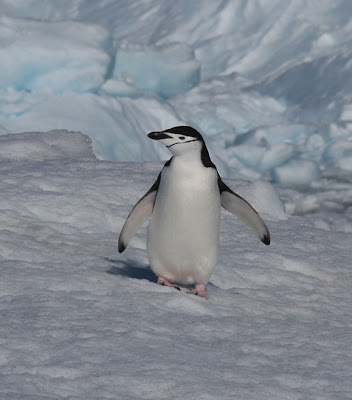Things have now calmed down enough to send an update.
We got off and going Thursday afternoon and soon had the necessary boat drill - life jackets on and into the lifeboat. All slightly more real given that the Explorer is still marked on the navigation chart, in case she is drifting sub-surface. We then went straight into a shallow test CTD station, to give us and the kit a run through - all went fine.
CTD= Conductivity, Temperature, Depth - actually depth comes from pressure and latitude, then salinity comes from conductivity and temperature and density comes from temperature, salinity and pressure. 'The CTD' is used for the whole frame of sensors and bottles - there are 12 10litre bottles that we close on the way up - there is 2-way communication with the package down the wire. We need water to check the salinity measurements, so 10 litres is plenty, when there are others looking at oxygen, CO2, possibly trace gases such as CFCs (relatively new to the atmosphere so can use them to trace sinking water - timescale for the ocean is 1000-1500 years) and chlorophyll concenbtration then 10litres needs to be used sparingly, some other work needs 10 or more bottles from one depth.
After dinner Gerard and I checked out the ADCP (Acoustic Doppler Current Profiler - measures the water velocity from the doppler effect between 2 pings of sound, removing ship velocity using GPS) data - it had heading, pitch and roll, even if the display didn't. Early night before a 3am CTD the next morning - hadn't managed to activate the ADCPs mounted on the CTD frame (LADCP, L for Lower) on the shallow cast and it would have been too shallow to process the data anyway. They worked fine. Then went to the bridge for an hours birding before breakfast at 7.30. After that, started my actual 12 hour watch - lots of shallow CTD casts close together so no real break. By the end one of the LADCPs was playing up, but very little time between casts to investigate so we lost data for a few casts (not critical enough to hold the ship up). Still flaky, but we are getting there. Turned in at 10pm.
Up at 6am for an hour on the bridge with the binoculars, after checking status of LADCPs (at that stage they were worse, but we were beginning to work out why). Another 12 hour watch 8am-8pm but with deeper CTD casts further apart and we were more practised so generally much calmer. Managed to process some data. We had the deepest cast of the transect, 4700m, so the polystyrene cups came out (come back about 5cm high due to the high pressure). That was in a strong current so we had to drift about 2 miles to reduce the angle of the cable to the CTD package (cast took about 3.5 hours, surface current over 1 knot). Deployed an Argo float after the last cast at 9pm and then knocked off.
Much the same again today, another Argo float in, also pecked by the albatrosses to see if it was food. Argo floats drift at 2000m and take temperature and salinity measurements as they come to the surface every 10 days, feeds into oceanographic and meteorological real-time models, and other oceanographic analysis (such as about half of my thesis).
Quick note on the weather - we have incredibly good condition, sea state 2-4 (2 at the moment, no white wave caps) with about a 2 metre swell. Sun is out and it's quite pleasant in the sun, despite an air temperature of 5C (have been sampling in sweatshirt today, was t-shirt yesterday when water was a bit warmer at about 6C). Only thing that's moved because of the ship motion so far has been the soup. On that note, it's lunchtime.
Photos to come
























































